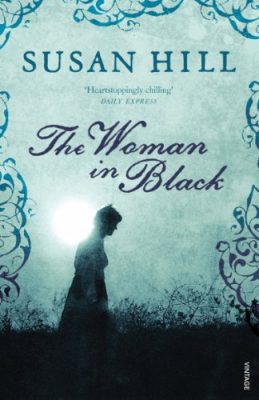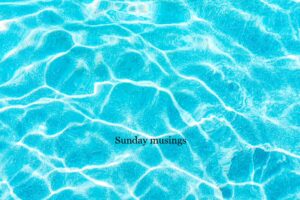
The Woman in Black by Susan Hill
I was first introduced to the Woman in Black in a small theatre in Southend-on-Sea watching the incredible adaptation by Stephen Mallatratt. I’ve seen it four times in total, but embarrassingly I didn’t even realise it was originally a novella until quite recently, probably around the time the Daniel Radcliffe movie came out. I spotted the book in a charity shop (unfortunately with Radcliffe’s face on the front – not that I dislike him, I just hate books with movie posters on the cover) and I knew I had to read it as the play was so damn creepy.
The story of The Woman in Black is told by Arthur Kipp, a London solicitor who travelled to the countryside in his youth to sort through the documents of a deceased client. The elderly woman who died, a Mrs Alice Drablow, lived in a large creepy house on Nine Lives Causeway, the path to which flooded intermittently whenever the tide came in. Arthur decides that, instead of travelling to and from the house to his hotel in the nearest town by pony and trap, he will reside in the house for a few days until he has pored through all of the documents – of which there are many.
What ensues is a tale of American Werewolf in London-esque villagers, ghostly apparitions, curses and unspeakable tragedies. Arthur must decide whether to ignore his instincts and remain in the house to continue organising Mrs Drablow’s documents or heed the eery warnings and return to London to explain the unfinished job to his boss.
I must say, I was quite surprised to be disappointed by Hill’s novella. There was a complete lack of suspense and tension, particularly with the ending as the character had already mentioned the outcome at the very beginning of the story, and I found the lengthy descriptions to be dull rather than chilling and atmospheric. The characters were two-dimensional and often irritating, and Arthur almost immediately accepted the existence of ghosts with very little doubt. This made the story predictable and wasn’t at all frightening.
The background plot with the woman in black was really compelling and contained a satisfyingly horrid tale, but I found Hill spent far too much time describing Arthur in the marshes before hurriedly filling in the blanks with a few short paragraphs near the end. I wanted to really take my time with that part of the novel but I was given nothing more than a rushed anecdote that Arthur guessed most of, quite implausibly I may add, by reading a series of odd letters.
I never thought I’d say this, but I recommend the play over reading the novella. The play feels more put together whereas the novella somehow feels like a rushed imitation. This might be due to the order I experienced them in, but even if that was the case I simply enjoyed the play so much more. The story works brilliantly on the stage but is rather dreary in prose.
Now as for the Daniel Radcliffe movie, well…



Leave a Reply